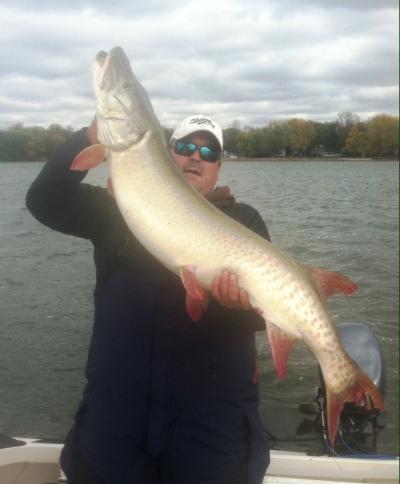Lac Seul is a large, crescent shaped lake in Kenora District, northwestern Ontario, Canada. It is approximately 241 km (150 mi) long. It has a maximum (regulated) depth of 47.2 m, with a surface elevation of 357 m above sea level. It is the second largest body of water entirely within the province of Ontario (Lake Nipigon being first). The lake consists of open water bays, narrow channels, and islands. It is a relatively shallow lake with many rock shoals. This provides a good habitat for Walleye and Northern pike as well as Bass, Perch, and Muskie. Lac Seul is noted for offering some of the best fishing in Ontario.
Lac Seul is located on the former lake bend of Glacial Lake Agassiz. Owing to this previous lake, much of the bottom of Lac Seul is covered with thick deposits of lacustrine silts and varved clay of varying thickness. The water of Lac Seul is tea colored. In clear water Walleye only feed at dusk and dawn because of their light-sensitive eyes, but because of the tea color of Lac Seul, it provides excellent Walleye and Northern Pike angling opportunities throughout the day.
Lac Seul provides some of the finest trophy Northern Pike and Walleye and also provides access to the vast, practically untouched wilderness surrounding it.
The natural capacity of Lac Seul is augmented by the diversion of water from the Albany River drainage basin at Lake St. Joseph, allowing hydroelectric stations at Ear Falls where the English River leaves the lake, and Manitou Falls, 30 km downstream, to generate 90600 kW of electricity.
In fur trade days it was part of a canoe route west from James Bay: James Bay, Albany River, Lake St. Joseph, portage, Lac Seul, English River (Ontario), Winnipeg River, Lake Winnipeg.




